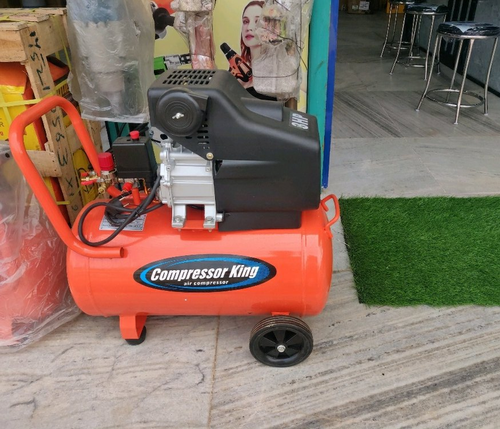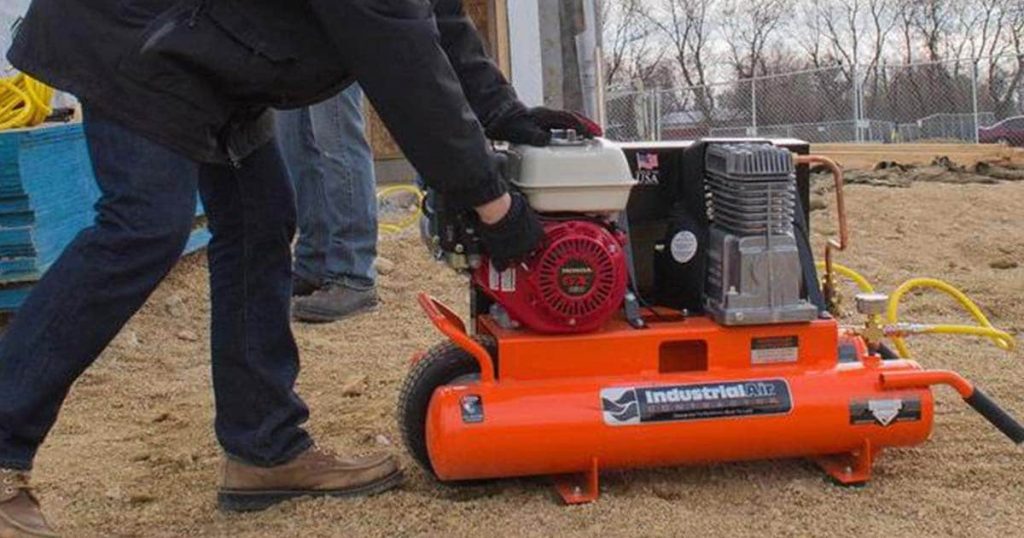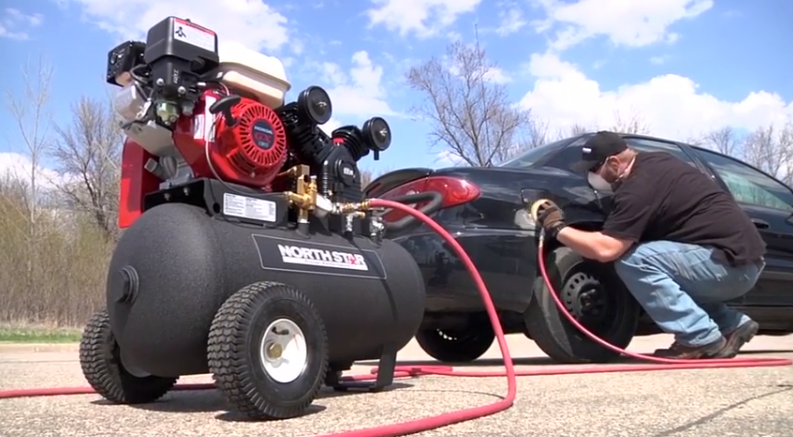It would be virtually impossible to find a tradesman, machinist, or just plain old DIY’er who’s ever used a standard power tool, and hasn’t imagined how much easier their job would be if they had an air compressor. And it’s pretty easy to understand why, too.
For almost any tool imaginable, there’s a pneumatic-powered equivalent waiting to jump in, whatever or wherever the task is, and make short work of it. From air-powered wrenches and grinders, all the way up to air-powered saws, they’re out there, and all they’re looking for to prove their worth is a steady source of compressed air.
So, if you’re thinking about giving one of these pneumatic wonder-tools a try, now’s a good time to do it. But first, let’s take a moment to become familiar with the piece of equipment that makes it all possible: the compressor.

Reliable compressed air anywhere, anytime
Compressors might be the most common piece of equipment you’re likely to find on any shop floor but that doesn’t mean they’re supposed to be stationary shop fixtures. That’s because with quality-built multistage petrol compressors it’s possible to use pneumatic tools anywhere and rest assured that you’ve got a reliable, continuous source of compressed air to keep them going.
Now, chances are if you’re reading this article you’re no stranger to air compressors, so the real question is: why would you want (or prefer) a petrol powered one?
The answer’s really very simple: they’re convenient. If you’re familiar with internal combustion engines, how they work, how they perform, and how easy they are to maintain, then a petrol powered compressor is like a faithful old friend. And not unlike a faithful old friend, petrol powered units will go unquestioningly with you anywhere you want to take them. So, those are the benefits – plain and simple – but let’s look at what those benefits mean in the real world.

Quality that’s perfectly portable
Whether you’re a DIY’er with a little workshop behind your house, or you’re running a full-service tire repair business off the tails of a few service trucks; there’s no substitute for compressed air that can be supplied pretty much continuously, and be moved when necessary.
First and foremost, with a petrol powered air compressor, you’re not obliged to stay near a high voltage power supply. Nor are you likely to find yourself suddenly facing a loss of productivity if there’s a power disruption. Imagine the cost and headaches it can mean to a fabricator or precision machine shop to lose their air supply for several hours during the course of a day.
But petrol compressors do need, however, to be capable of reliably satisfying the following:
- The correct amount of air pressure for the devices they’re powering.
Measured in pounds per square inch (PSI), it’s the measurement of air pressure a compressor delivers to power the pneumatic tools being used.
- The correct volume of air for the devices they’re powering.
Measured in cubic feet per minute (CFM), it’s the amount of air the compressor’s capable of delivering to a pneumatic tool hence longer running tools need the higher output compressors.
- The correct tank volume and duty cycle.
An air tank’s volume (measured in litres) will ultimately determine just how long you’ll need a compressor to run to hold an ample level of air to run the tools. Duty cycle is the amount of time needed to reach and maintain that level.
In reality, the requirements couldn’t be more straightforward from this point. Pneumatic tool manufacturers clearly specify the operating psi and cfm ratings of their tools and ideally, the size compressor you’ll choose should exceed the psi and cfm ratings of the tools you purchase.
Inherently, the higher the volume (capacity) of the compressor, the higher the horsepower of the compressor motor which will invariably deliver a higher psi. This is especially important when running multiple tools simultaneously from a compressor.
Fortunately, the retailer you purchase your compressor from will also be able to recommend the best pneumatic tools to go with it. But it shouldn’t come as any surprise that there are Australian made petrol compressors available with 13HP motors that can maintain up to 180 litres of compressed air at all times, delivering up to 710LPM reliably all day long.
To put that into perspective: it’s the powered equivalent of running two pneumatic nailers, two drills and an orbital sander continuously, all day long… all from a compressed air source that’s mounted in the bed of your ute. That’s pretty impressive, to say the least and although most petrol powered users may never need a rig that powerful (at least not on a truck bed), it’s a clear indication of just what’s available, for hobbyists right up to industrialists, without compromising quality for portability.

The conclusion
At the end of the day, it’s good to know that there’re locally manufactured solutions available to fit the requirements of any air compressor user.
Whether you’re looking at using a small pneumatic saw for some light back yard body work, or contemplating dragging out the pneumatic hammer, grinder, and sprayer to cut out, replace and repaint an entire quarter panel, no other compressor can beat the petrol compressor when it comes to quality and reliability.
Be sure to speak with a dealer about which sized compressor would be best for you and you’ll be glad you made the portable choice.
























